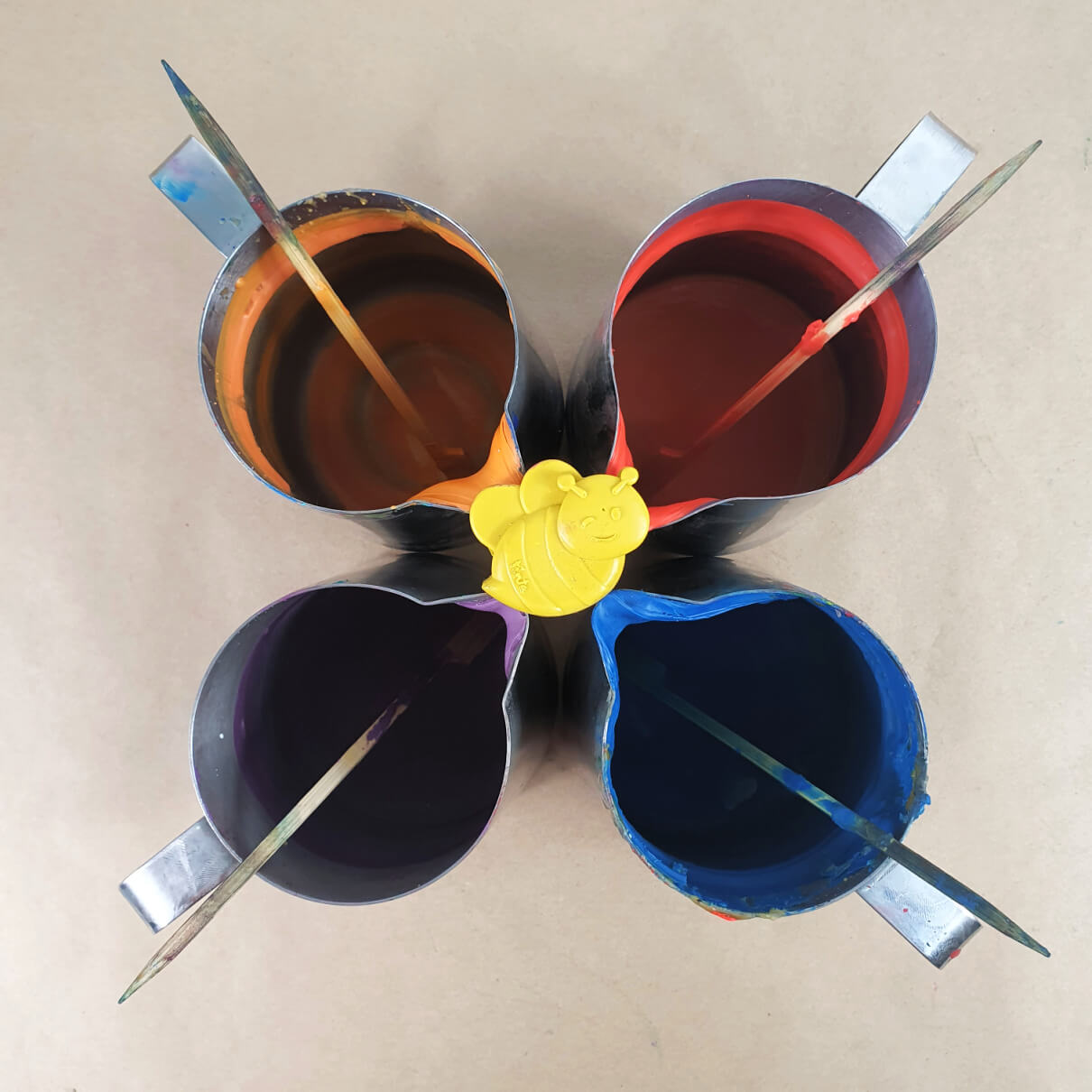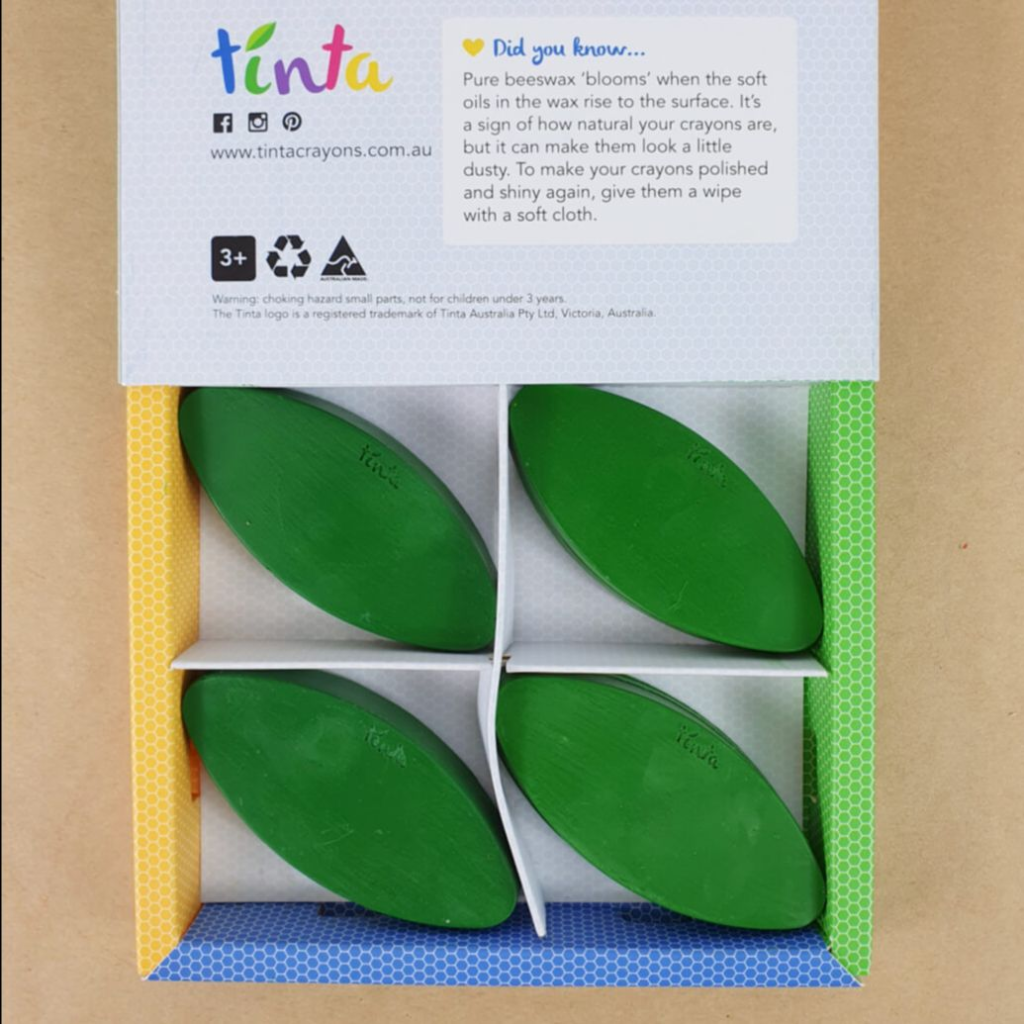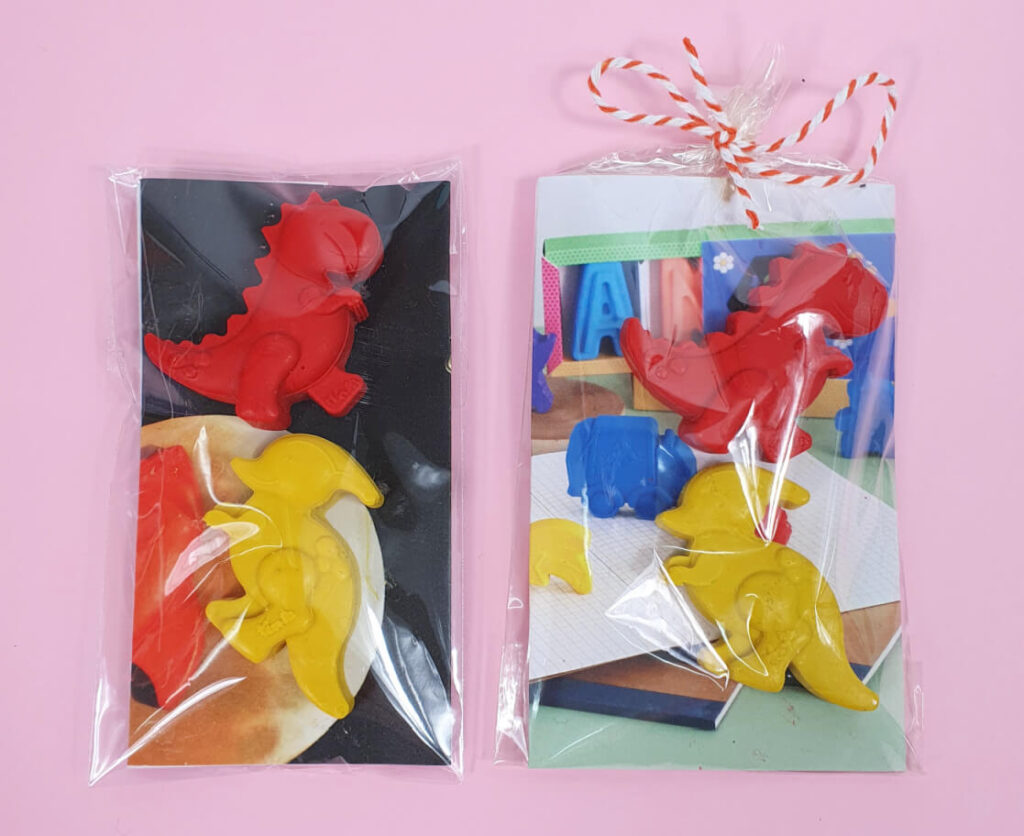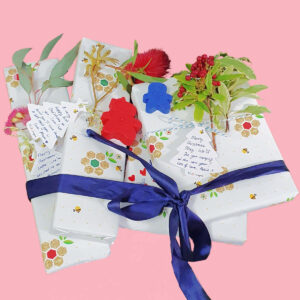Colour Lovers.
~ Hello, Colour Lovers.
As an Australian business, there’s nothing more important to us than being safe, sustainable, and eco friendly. We don’t put anything into our crayons that we wouldn’t give our own kids. What little plastic we do bring into the workshop, we reuse as much as possible, and none of it ends up in the crayons. We can proudly say all of our packaging can either be reused, recycled, or composted in your very own home- with no fine print, asterisks, or conditions.
We do the hard work now so it’s easier than ever before for you to give your kids crayons that are safe and fun now AND far into the future.
In this blog, we’ll cover:
- Our safety values
- Why is asbestos used in other crayons?
- What non-toxic really means
- Our partnership with bees
- Reduce, reuse, recycle
Our safety values
Tinta began towards the end of 2015, when Maria F learned it’s still legal for crayons made overseas contaminated with asbestos to be sold here in Australia. She wondered how hard can it be to make her own crayons. That way, she’d know exactly what went into them. Then, she could be sure they were safe for her child, Maria P’s children, and all of yours too.

Fast forward to today and we’re still operating on those same safety and eco values we started with. Our crayons are regularly tested to ensure nothing nasty has slipped under the radar. Tinta does not use paraffin, palm oil, soy, talc, asbestos, fibreglass, heavy metals, or food allergens like gluten. We research all our suppliers to make sure they meet our safety standards.
What’s safe for your kids also needs to be safe for the world they’ll inherit, so we operate with an eco-conscious mindset at all times. We support local beekeepers, and reduce, reuse, and recycle even right down to the crayons themselves.
Why is asbestos used in some crayons?
Asbestos is a naturally-occurring fibrous mineral, used in Australia since the 1920s as insulation because it’s resistant to corrosive chemicals and fire. In 2003, Australia banned the use of asbestos across the board.
It comes down to what crayon makers use to solve the problem of wax alone being too soft. Here at Tinta, we use natural plant waxes to harden our crayons without compromising on safety. Other companies might use mineral talc, which is mined in locations often already contaminated with asbestos fibres.
There’s been several imported crayon recalls across Australia over the last few years. Many of the involved companies claim that the contaminated talc is suspended firmly in the wax and therefore still safe. Unfortunately, that doesn’t take into account that heat and age make paraffin crayons degrade which could expose the fibres. So could drawing on a rough surface like concrete.
We can’t take that chance, not with our safety and yours to consider, so you’ll never find fillers at Tinta Crayons.
What does non-toxic really mean?
Non-toxic has become a little bit of a buzzword these days. From our point of view, non-toxic should mean that even if your child eats a whole pack…nothing happens.
So you can be extra sure you’ve got all the facts, we get our crayons regularly tested by an independent organisation. It’s important for both of us to know that there’s no heavy metals, food allergens, or unsustainable waxes or oils hiding in your crayons.
From the very beginning, we knew we wanted to be safe for the environment as well as for your kids. Crops like soy and palm oil rely on those plants being the only thing that’s growing on the land, as well as consuming a lot of water and chemicals. Paraffin wax is a byproduct of oil refinery, which is definitely not kind to the environment.
Therefore, the best solution is to use organic beeswax.
Our partnership with bees
How beeswax is made
Beeswax is produced by young worker bees in the hive. It’s secreted from glands on the underside of the bees’ abdomen, and solidifies into small scales on contact with the air. Other workers gather the scales and chew the wax to shape it, similar to kneading clay for a pot. They’ll then build both the honeycomb’s cells and caps as well as nursery combs for the baby bees.
For more information on how beeswax works in a hive, check out Ben’s Bees post
Because Australia has such a thriving beekeeping industry, we can be certain the suppliers we choose use sustainable and organic practices. We choose local suppliers to reduce our carbon impact and support other small businesses, especially those focused on providing high-quality safe products.
There’s a number of ways beekeepers can harvest wax for us to use, but not all are beneficial both for us and the bees. We strive to support practices that only use wax the bees don’t need, like the caps off harvested honeycombs. This means the wax we put into your crayons is sterile, clean, and pure.
And of course, we want a chemical-free wax. Australian honey—and beeswax— is among the purest in the world, which is great news for all you colour-lovers. This is because of Australia’s bio-control policies and our relatively new industry. So far, we’ve been free of the pests and diseases that have forced the rest of the beekeeping world into heavy chemical usage.
Problems facing beekeepers
Unfortunately, Australian beekeepers face an uncertain future. In mid-2022, the deadly varroa mite was detected in hives in New South Wales. Varroa is easily spread between hives and across whole beekeeping regions. To add insult to injury, it commonly develops resistances to chemicals used to combat its spread.
Our native bees, because they’ve evolved in isolation from European and Asian honeybees, don’t have the right physiology for the mites to exploit. But in honeybees, the mites not only feed off the bees themselves but also spread viruses that can lead to deformities and mass die-offs in the colony.
If varroa is detected in enough hives, a farmer’s whole business will have to be destroyed. Some farmers across the NSW outbreak have had their farm wiped out four or five times in as many years. It’s important to us that we’re helping local organic beekeepers to stay on their feet and keep pesticide-free.
For more information on problems facing our beekeepers, check out these articles from Amateur Beekeepers Australia
Reduce, reuse, recycle
As a sustainable business, we want to leave a small impact on the natural world while making a big impact on you and your children.
Recycle
In 2019, we redesigned our boxes.
Every single part of the box is recyclable, and there’s no plastic window to take out and throw away.
The inserts are strong enough to keep your crayons secure but still flexible enough to hold our bigger crayons like these petals.
We knew having a bright multi-coloured matchbook-style design would make both a great gift box and an adorable storage option.
The walls are the part we’re most proud of. They absorb any shock impact to keep your crayons safe as they make their journey through the post to their new homes.
Reuse
From time to time, some of our crayons don’t come out looking like the little cuties you have at home. If there’s bubbles in the wax, or it’s too cold to set right, they might look something like this.
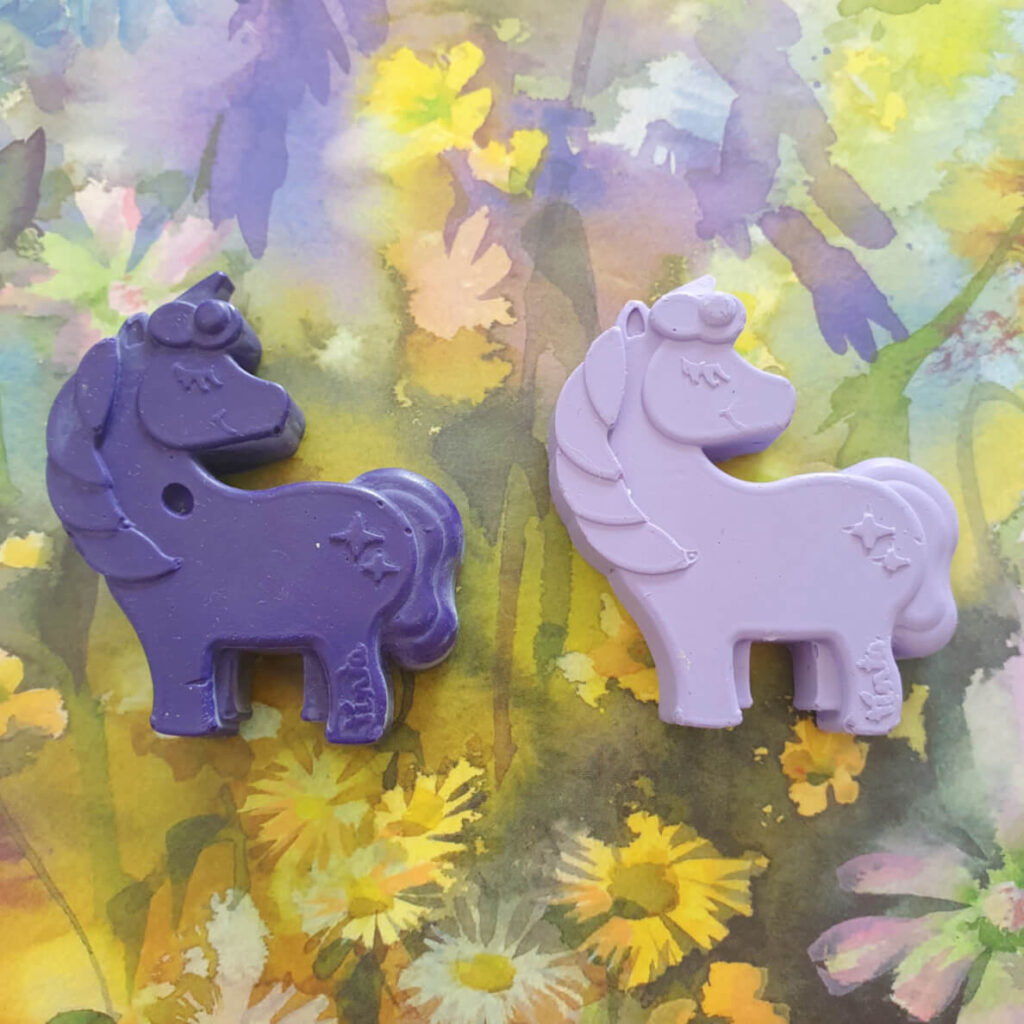
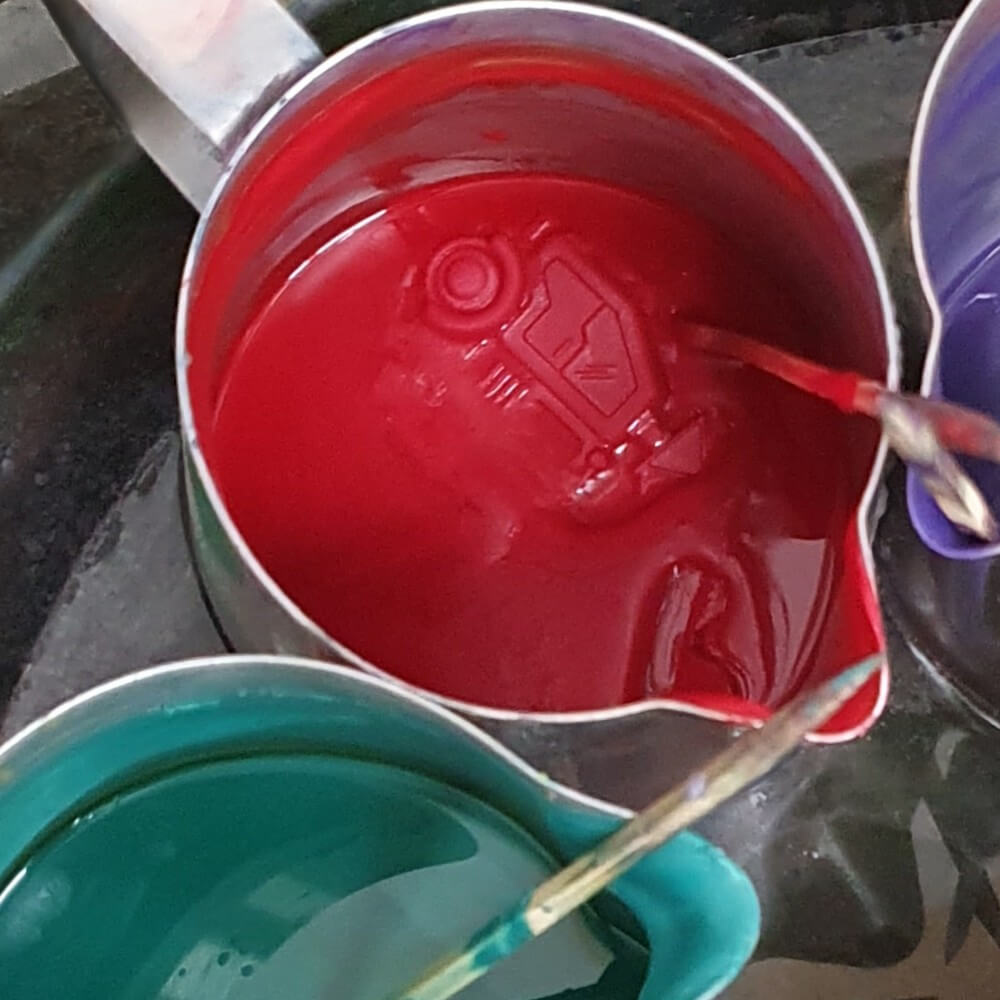
So we melt them back down and pour them again.
To pour all our crayons, we use steel barista jugs. These jugs will last us more than 20 years before they need recycling, and they’re easy to clean too.
Reduce
As of April 2023, we’ve switched to using compostable cellophane bags for all our favour orders. All you have to do is take the crayon and the card out of the bag and pop it into the compost or under some soil. It’ll be gone before you know it!
We only use one sticky stripe to secure our mailer bags so you can keep them for your own posting needs. When you can’t use the bag anymore, all you have to do is chop it up into strips and into the compost it goes. It’ll work as brown matter the same way you’d use leaves and paper.
For more information on our eco values, check out our socials (Instagram or Facebook) and subscribe to our newsletter in the section below. We’ll have loads of great ideas on how to recycle in cool and interesting ways, how to make your own artsy bee hotel with the kids, and so much more. We’ll see you there, with a buzz in our step and flowers in our hair!
Maria & Maria x
Check out our other posts
- Easy Christmas craft for your festive season
 We’re getting stuck into decorating our workshop so Santa knows to pay us a visit, and we thought why not share our easyChristmas craft ideas with all of you. Whether you’re putting up your tree, hanging wreaths and garlands, or starting on all those cards you have to send, there’s always time for a cheeky bit of colouring in, right?
We’re getting stuck into decorating our workshop so Santa knows to pay us a visit, and we thought why not share our easyChristmas craft ideas with all of you. Whether you’re putting up your tree, hanging wreaths and garlands, or starting on all those cards you have to send, there’s always time for a cheeky bit of colouring in, right? - How to give the perfect present every time
 We’re taking the guesswork out of gift-giving with our handy-dandy guide. From perfect presents for little kids to cracking gifts for older kids, we’ve got the thing for you!
We’re taking the guesswork out of gift-giving with our handy-dandy guide. From perfect presents for little kids to cracking gifts for older kids, we’ve got the thing for you! - Once upon a time: the Tinta story
 October is our birthday month, and this year we’re 8 years old! At Tinta HQ, we’re all piling into our toddler Transport set to take a trip down memory lane in the World of Tinta, and you’re invited too.
October is our birthday month, and this year we’re 8 years old! At Tinta HQ, we’re all piling into our toddler Transport set to take a trip down memory lane in the World of Tinta, and you’re invited too.

